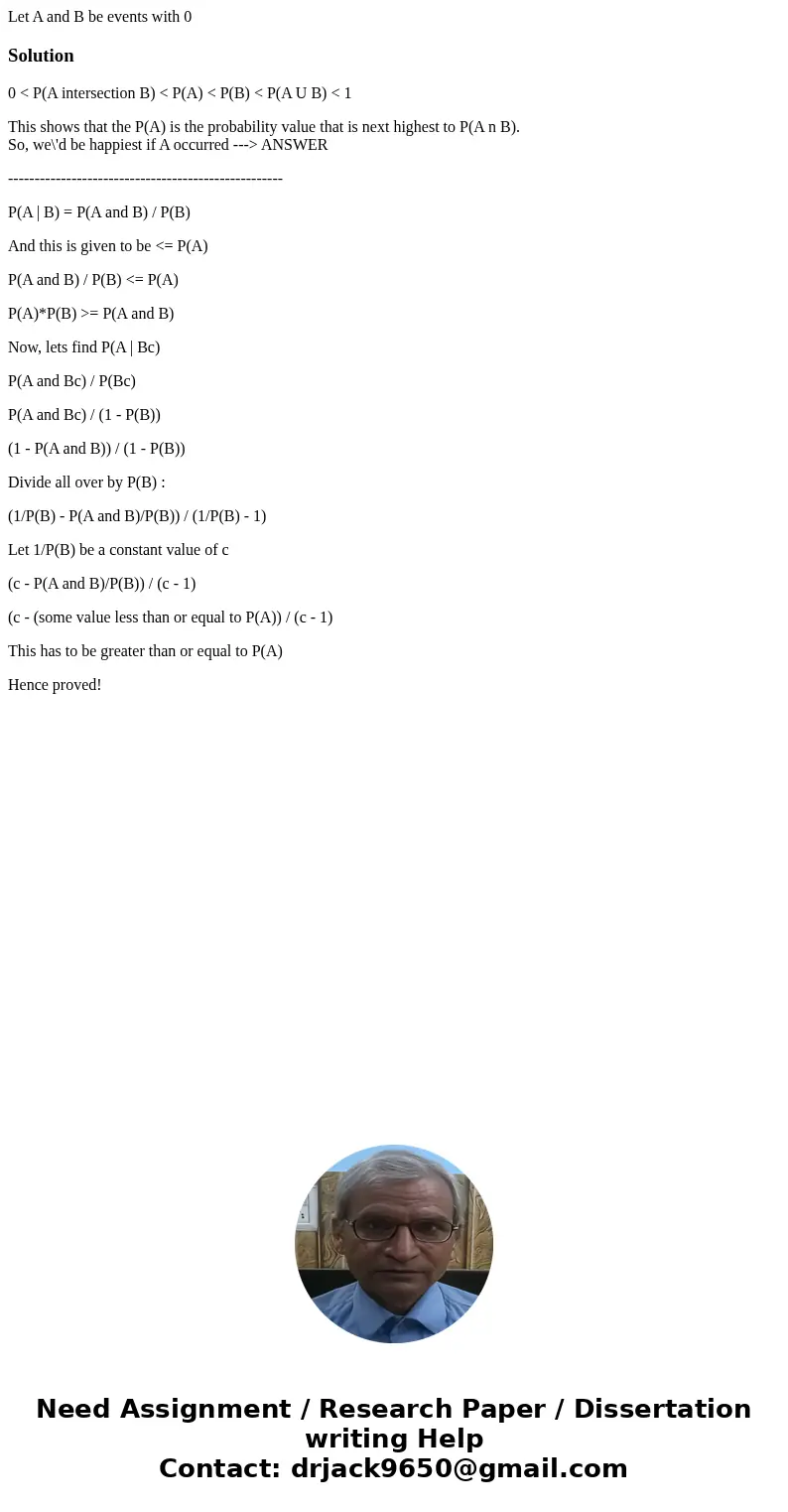Let A and B be events with 0 Solution0 PA intersection B P
Let A and B be events with 0 
Solution
0 < P(A intersection B) < P(A) < P(B) < P(A U B) < 1
This shows that the P(A) is the probability value that is next highest to P(A n B).
So, we\'d be happiest if A occurred ---> ANSWER
----------------------------------------------------
P(A | B) = P(A and B) / P(B)
And this is given to be <= P(A)
P(A and B) / P(B) <= P(A)
P(A)*P(B) >= P(A and B)
Now, lets find P(A | Bc)
P(A and Bc) / P(Bc)
P(A and Bc) / (1 - P(B))
(1 - P(A and B)) / (1 - P(B))
Divide all over by P(B) :
(1/P(B) - P(A and B)/P(B)) / (1/P(B) - 1)
Let 1/P(B) be a constant value of c
(c - P(A and B)/P(B)) / (c - 1)
(c - (some value less than or equal to P(A)) / (c - 1)
This has to be greater than or equal to P(A)
Hence proved!

 Homework Sourse
Homework Sourse